In a prior post, I began a review of when beneficial interests under spendthrift trusts may be reached as property of the estate in the Ninth Circuit. Today I’ll look more closely at the decisions in In re Spencer ((306 B.R. 328 (Bankr. C.D. of Calif., 2004).)) and In re Coumbe ((304 B.R. 378 (9th Cir. BAP, 2003).)) primarily to see how we handle the fully revocable inter vivos spendthrift trust. I’ll also review what happens when a trust becomes irrevocable or contingent events occur during the 180-day period of Sec. 541(a)(5)(A). ((Unless stated otherwise, all section references are to the Bankruptcy Code, 11 U.S.C. Secs. 101-1330.))
So far, we’ve seen the difference, for bankruptcy purposes, between a testamentary trust and an inter vivos trust. We also learned, from Neuton v. Danning (In re Neuton), ((922 F.2d 1379 (9th Cir. 1990).)) that there is a two-step inquiry for determining when an inter vivos trust interest is property of the estate: (1) whether a contingency removes the trust interest from the estate; and if not, then (2) whether the spendthrift provision removes the interest from the estate. ((Id. at 1383.)) And we saw that in California, a bankruptcy trustee can reach up to 25% of a spendthrift trust interest under Cal. Prob. Code Sec. 15306.5(a). ((But note that Cal. Prob.Code Sec. 15306.5(c) exempts from payment to the estate or a creditor “any amount that the court determines is necessary for the support of the beneficiary and all persons the beneficiary is required to support.” This provision will further limit the bankruptcy trustee’s claim to 25% of the debtor’s interest in such a trust, assuming it is properly asserted.))
In addressing the first step of our inquiry—whether a contingency removes an inter vivos trust interest from the estate—our focus is on the status of the trust on the petition date. The question may be resolved in most cases by asking whether the trust is revocable on the petition date. In Neuton, the trust was irrevocable on the petition date and the debtor’s interest was deemed to be property of the estate despite the existence on that date of at least one contingency that might prevent debtor from ever sharing in the trust proceeds (debtor had to outlive the primary beneficiary).
But in Spencer, ((306 B.R. 328 (Bankr. C.D. of Calif., 2004).)) the Bankruptcy Court was faced with an inter vivos spendthrift trust that was fully revocable on the petition date. As to our first question, the Spencer Court held that the revocability of the trust on the petition date removed it from the bankruptcy estate. On this point, Spencer relies on the logic of In re Roth, 289 B.R. 161 (Bankr. D. Kan. 2003) as well as the holding in Burton v. Ulrich, (In re Schmitt), 215 B.R. 417 (9th Cir. BAP 1997) which concluded that “under either California or Oregon law, an interest in a revocable trust was not a property right because the inter vivos trust was revocable when the bankruptcy was filed.” ((Id. at 332.))
While this revocability determination was probably enough to resolve the first question, Spencer also cites Coumbe for the proposition that, because the spendthrift limitation was valid and enforceable on the petition date, “the Trust would have been excluded from the bankruptcy estate under section 541(c)(2).” ((Id.)) But note that the Coumbe court was dealing with Arizona law which does not appear to have a provision similar to the 25% carve out for a bankruptcy trustee or creditors under California law. Does this open the door for a bankruptcy trustee to claim that California law creates a property interest for the estate in such a trust, even though it was revocable on the petition date?
The bankruptcy court in Spencer also faced a different twist. And that was the death, within 180 days of the petition, of the remaining trustor that held the right to revoke the trust. The bankruptcy trustee contended that this “contingency” (revocability) was removed during the 180-day period set out in Sec. 541(a)(5)(A) and that this constituted a transfer of the trust interest to the debtor by “bequest, devise, or inheritance.” But the court found that the death of the second trustor did not change its conclusion. It held that the transfer to the debtor by an inter vivos trust was not a transfer by “bequest, devise or inheritance;” and accordingly, that the debtor’s interest did not become property of the estate after the filing. ((The bankruptcy trustee in Spencer also argued that when the last trustor died within 180 days of the petition, the trust effectively became testamentary because the debtor became the sole trustee as well as the sole beneficiary, citing Cal. Prob. Code Sec. 15301(b). Under that Section in California, the “court may make an order directing the trustee to satisfy the money judgment out of [a principal amount which has become due and payable].” Spencer, 306 B.R. at 331. But the Court rejected this analysis because the debtor’s children were also contingent beneficiaries, further finding that California law requires that the debtor be the sole beneficiary, without regard to the contingent nature of the beneficial interest of the children.))
At this point, we can assemble a rough analytical process for answering the primary question—when is a spendthrift trust interest property of the estate? In the form of questions, the analytical process might look like this:
- Is the trust testamentary or inter vivos?
- If testamentary, did the grantor die pre-petition or within 180 days thereafter?
- If the testamentary trust is irrevocable because of the grantor’s death, are there any remaining contingencies that remove it from the estate, including spendthrift limitations?
- If testamentary, were there any payments or distributions from the spendthrift trust within 180 days of the petition that are reachable by the estate because they are “income distributions” versus “corpus”?
- If the trust is inter vivos, is it fully revocable on the petition date?
- If inter vivos trust is irrevocable on petition date, are there other contingencies that would remove the trust interest from the estate, including the spendthrift limitations.
In my next post on this topic, I’ll look at some practical questions for courts and practitioners when dealing with trust interests that are or might be property of the bankruptcy estate.
Richard Marshack has served as a panel trustee in the Central District of California for over 25 years. Along with his partner, Ed Hays, he manages an active reorganization and litigation practice, providing representation to debtors, creditors, trustees, creditor committees and related litigants in both the Federal Court and State Courts. Their firm, Marshack Hays LLP, is located in Irvine, California and they can be reached at 949.333.7777.
By Richard Marshack

